The Son of the Sheik (1926)
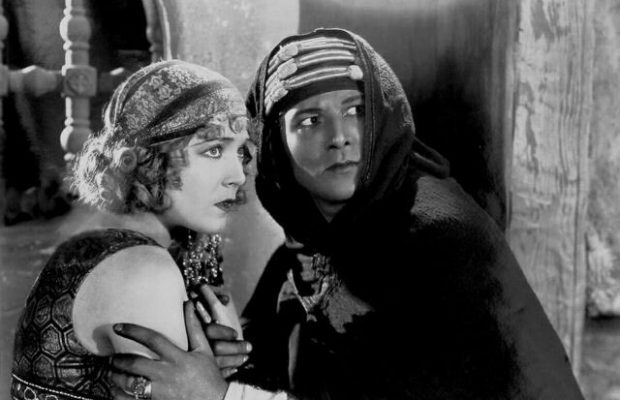
Toronto Film Society presented The Son of the Sheik (1926) on Monday, December 6, 1965 as part of the Season 18 Monday Evening Silent Film Series, Programme 2.
~~~~~~~~~~~~~~~~~~~~~~~~~~~~~~~~~~~~~~~~~~~~~~~~~~~~~~~~~~~~~~~~~~~~~~~~~~~~~
(Main Auditorium, UNITARIAN CHURCH, 175 St. Clair West)
Programme No. 2
Monday December 6, 1965
8:30 pm
The Legend of Rudolph Valentino (1963) (52 minutes)
Wolper-Sterling Productions
Producer: Graeme Ferguson
Executive Producers: Saul Turell & Paul Killiam
Script: W.K. Everson & Graeme Ferguson
Additional script: Arthur Knight
Music by Alexander Semmler
A television documentary which includes excerpts from many of Valentino’s films, including some of the lesser-known ones; also some off-screen footage. Graeme Ferguson (late of Toronto) and Saul Turell were also the producers of The Love Goddesses.
INTERMISSION
RUDOLPH VALENTINO in The Son of the Sheik (1926) (1 hour 15 min)
United Artists. 7 reels.
Presented by John W. Considine, Jr.
From the novel “The Sons of the Sheik” by E.M. Hull
Screen adaptation: Frances Marion & Fred de Gresse
Produced and directed by George Fitzmaurice
Released July 1926
(Sound track added for re-release in 1938)
CAST
Ahmed: Rudolph Valentino
His father, Ahmed Ben Hassan: Rudolph Valentino
Yasmin: Vilma Banky
André: George Fawcett
Ghabah: Montague Love
Ramadan: Karl DAne
S’rir: William Donovan
Diana (Ahmed’s mother): Agnes Ayres
Ali: Bull Montana
Zouave: Erwin Connelly
Pincher: Bynunsky Hyman
Pierre: Charles Requa
~~~~~~~~~~~~~~~~~~~~~~~~~~~~~~~~~~~~~~~~~~~~~~~~~~~~~~~~~~~~~~~~~~~~~~~~~~~~~
It is always enlightening to learn how early films (or books, or plays) looked to their contemporaries. Here, in its entirety, is the review of The Son of the Sheik in Photoplay Magazine for October, 1926:
Long will this picture remain in the memory of those fortunate to see it. The Son of the Sheik was Rudolph Valentino’s last effort before the silent screen. He was the old Rudy again and his work, without question, ranked at the top of the best performances of the month. [NOTE: This is a reference to Photoplay‘s custom of selecting the Six Best Pictures and the Six Best Performances of each month.]*
Rudy’s old desert, Rudy’s old fire, his old love, Agnes Ayres, his new love, Vilma Banky, his horses and his tents are all here, and how! Romance fills the air every second Rudy’s visible.
The plot, if you insist, concerns the child of that marriage between the Sheik and the Lady Diana, and what a child he grew up to be! He rides like the wind, he fights like Douglas Fairbanks on a busy morning, and his love-making is more torrid than an August afternoon in an accounting department.
In a troupe of French players, touring the desert, he beholds his love. She is fair and has dove’s eyes. At night, beneath the desert stars, he woos her and she is very, very happy to be won. But her father wants the young Sheik’s money. Her father’s confederate wants the girl. So drama comes in, when Rudy is captured, tortured and held for ransom.
Freed by his own men, he believes the girl has betrayed him. He vows revenge and captures the girl, riding off to his tent with her, frail and sobbing in his arms. The rest is what makes the picture unforgettable.
Rudy plays both father and son, ideally. Vilma Banky is perfectly lovely as the girl. And we expect every fan in the country to be saying “It was Rudy’s best. I can never forget him”.
*(For the historical minded, the other five “Best Pictures” of that month were: The Waltz Dream, a German film starring Willy Fritsch and Mady Christians; You Never Know Women; Don Juan (Barrymore); The Scarlet Letter (Lillian Gish); and One Minute to Play, starring the football hero Red Grange, who surprised everyone by giving a very good performance).
The thing to be noted in this review (especially by members of the younger generation, always quick to laugh with easy superiority at the ridiculous tastes of earlier generations) is the fact that although the anonymous reviewer obviously loved the film, she (I presume it was a she) equally obviously wasn’t taking it seriously. In short, people in the 1920’s weren’t as stupid as you may think, even if they did live all of forty years ago.
The Twenties and the Sixties are alike in many respects, but among the differences is the fact that nowadays people tend to take their pleasures more seriously. We’re not allowed to enjoy a story for its own sake any more; fiction is justified only if it “means” something else. Even comedy is respectable only if it can be classified as “satire”; comedy for the sake of laughter isn’t good enough. Stories about improbable but interesting events are “claptrap”; stories about human beings and their relationships are “soap opera”. Obviously the World is in a terrible state of chassis, what with the Bomb threatening to end our lives en masse instead of one at a time as hitherto, and literature that isn’t edifying is intolerably frivolous and makes us feel guilty.
There are signs of revolt against this Puritanical attitude in the current vogue for the James Bond stories, both in print and on the screen. President Kennedy’s endorsement make it o.k. to admit a liking for these yarns, and the overwhelming rush to take advantage of this sanction suggests that people are secretly longing for the old-fashioned freedom to honestly and openly enjoyo a story for its own sake, without caring whether or not it is either “probable” or “significant”. Back in the sophisticated 1920’s, between the end of the War to End Wars and the onslaught of the Depression, life was fun and far from earnest, and it was quite possible to recognize something to be sheer, unadulterated corn . . and still love it!
The only important thing about The Son of the Sheik was that it provided a vehicle for the display of the screen personality of Rudolph Valentino; that was the sole function of the film, which it fulfilled to perfection. Realism and credibility were neither offered nor asked for. You didn’t have to believe in the film to enjoy its unabashed romanticism. (“Escapism” is another dirty word in this masochistic age). The people of the 1960’s who laugh loudly at this film (to impress you with their superiority) are the only ones who are taking it seriously.
* * *
RUDOLPH VALENTINO
These notes are being written before I have seen The Legend of Valentino (having missed it on television), but presumably it will cover the story of Valentino’s life and career much more adequately than I can or need to here. However, the following may be useful for reference.
1. Pre-Hollywood
Born May 6, 1895, in Castellaneta, Italy, and christened Rodolfo Alfonzo Rafaelo Pierre Filibert Guglielmi di Valentina d’Antonguolla (which proves that he was a big name long before he went into pictures). His mother was French, his father was a veterinary and a moderately well-to-do farmer who had been an officer in the Italian cavalry. Rudolfo himself graduated from the Royal Agricultural School in Genoa.
Emigrated to America at the age of 18, arriving in New York on Dec 23, 1913. His ambition was Agriculture but his pastime was ballroom dancing, and his natural talent for this saved him from starvation: from 1914 to 1917 he earned his living as a professional dancer in vaudeville and elsewhere.
In 1917 he arrived in California as a member of a musical comedy troupe. Here he ran into a former New York friend who was now a film actor (Norman Kerry) who encouraged him to try his luck in Hollywood. He was trying to earn enough money to buy himself a farm.
2. Pre-Stardom
For three years he made a precarious living in Hollywood, falling back on his dancing whenever film jobs became too scarce. There’s no point in listing all the films he appeared in during this period. For the record, the first was Alimony (early in 1918) in which he was an extra, and the last was The Wonderful Chance (Oct 1920) in which he played a crook. He did everything from bits to leading men, not necessarily in that order. For although he played opposite Carmel Myers in A Society Sensation (Oct 1918) and All Night (Dec 1918) and opposite Mae Murray in The Delicious Little Devil (Apr 1919) and The Big Little Person (May 1919) and with Dorothy Gish in Out of Luck (Aug 1919), they led to nothing. He went back to playing small parts and minor roles. For the truth was that he was “too foreign-looking” in an era that adored such clean-cut American types as Douglas Fairbanks, Charles Ray and Wallace Reid. Foreigners were villains.
But one film must be mentioned: Eyes of Youth (Nov 1919) starring Clara Kimball Young, in which he played a lecherous tango dancer. June Mathis, scenarist and executive producer of Metro’s forthcoming film adaptation of the current best-seller, The Four Horsemen of the Apocalypse, happened to see Eyes of Youth and decided that Rudolph Valentino was the ideal actor to play the leading role of Julio, the young Argentine who went to Paris on the even of the War and found himself in demand because he could dance the fashionable tango. It was perfect casting, for the boy with the too-foreign face was suddenly discovered to be blazing with exotic sex-appeal. When the film was released (to become one of the biggest financial successes of all time) Rudolph Valentino stepped from obscurity to popularity. His career had finally begun.
3. Stardom
Strictly speaking, he wasn’t a star until Blood and Sand; but his name, whether placed above the title or below it, was a box-office attraction. Here is a complete list of his films from this time on. (The outstanding ones are in capital letters).
(a) for METRO (1921)
THE FOUR HORSEMEN OF THE APOCALYPSE (released March 6, 1921) directed by Rex Ingram; with Alice Terry
Uncharted Seas (released April, 1921) starring Alice Lake
CAMILLE (Sept 1921) starring Naziomova; designed by Natacha Rambova
THE CONQUERING POWER (July 1921) directed by Rex Ingram, based on “Eugenie Grandet”
Strange as it may seem, Metro (not yet Metro-Goldwyn-Mayer) never realized what a goldmine they had, and failed to take advantage of him. When his contract ended, Paramount was happy to snap him up at a much higher salary.
(b) for PARAMOUNT – Part 1 (1921-22)
THE SHEIK (released Nov 1921) based on the novel by E.M. Hull; co-starring Agnes Ayres; directed by George Melford
It is pointless for critics to write this off as a tawdry, trashy film. As far as the public (female, that is) was concerned it topped The Four Horsemen in establishing Valentino as every woman’s secret dream lover. The word “sheik” was immediately taken up as a slang word for “boy friend” or any fashionably attractive young man, and like “flapper” it remained in use until the end of the twenties. (In underground slang it still survives with a much less respectable meaning). Few films have had more impact on public mores (See Page 7 for a ketch of the plot).
Moran of the Lady Letty (Feb 1922) co-starring Dorothy Dalton. (A two-fisted melodrama–an attempt to win Valentino a male following as well).
Beyond the Rocks (May 1922) co-starring Gloria Swanson
BLOOD AND SAND (Sept 1922) Directed by Fred Niblo; with Lila Lee and Nita Naldi. (Valentino’s first starring vehicle, and still regarded as his best film. Shown in TFS Silent Series on Nov 18 1963)
The Young Rajan (Nov 1922) with Wanda Hawley. (A lavish but apparently very dull film).
Because of his justified dissatisfaction with the latter film, Valentino (doubtlessly egged on by his wife, Natacha Rambova, who had artistic ambitions for him) demanded the right of approval of every story assigned to him, plus an increase in salary; and upon being refused, he walked out. Paramount slapped an injunction on him for this breach of contract, prevent him from making films for anyone else. Once again he fell back on his dancing, and he and Natacha, a former ballet dancer, toured the country in vaudeville, sponsored by a beauty cream manufacturer. After an absence from the screen of nearly two years, he and Paramount settled their differences.
(c) for PARAMOUNT – Part 2 (1924-25)
MONSIEUR BEAUCAIRE (released Aug 1924 from the novel by Booth Tarkington; directed by Sidney Olcott; with Bebe Daniels, Lois Wilson, Doris Kenyon, Lwell Sherman; designed by Natacha Rambova.
A Sainted Devil (Nov 1924) directed by Joseph Henaberry (the Abraham Lincoln in The Birth of a Nation); with Nita Naldi and Dagmar Godowsky.
Cobra (not released till Dec 1925) released by Paramount, but produced independently. Directed by Henaberry; with Nita Naldi, Gertrude Olmstead.
After two films Paramount became so fed up with Natacha Rambova’s insisting upon supervising every last detail of production that they sold Valentino’s contract to a J.D. Williams, who (after plans for a picture called The Hooded Falcon were eventually abandoned) made only one film, Cobra and then bluntly broke his contract–Natacha was too much for him too, and as box-office returns on Beaucaire and Sainted Devil were indicating that Valentino’s popularity had not returned to its pre-vaudeville level, it wasn’t worth putting up with her. (Note that for some reason or other the release on Cobra was held up until after that of the next film below).
Joseph Schenck of United Artists now signed Valentino to a new contract–but only after Valentino had reluctantly agree to a clause excluding his wife from any interference in the productions. (This blow to her pride was what presently led to their divorce).
(d) for UNITED ARTISTS (1925-26)
THE EAGLE (released Nov 1925) directed by Clarence Brown; with Vilma Banky and Louise Dressser; adapted from Pushkin’s unfinished novel “Dubrovsky”
THE SON OF THE SHEIK (July 1926) (see Page 1)
The Eagle stirred Valentino fans as nothing had done since Blood and Sand. Here was the old Rudy back at last. It was the beginning of a come-back. The Son of the Sheik was an obvious attempt to capitalize on the popularity of his most famous role; but it actually worked–as witness the quoted review from Photoplay Magazine. (Indeed, for once a sequel was better than the original). Valentino’s four years of troubles were over at last.
Following the Los Angeles premiere in July, Valentino went to New York to make personal appearances with the New York opening in August, and it was here that he was suddenly rushed to the hospital and operated on for appendicitis and gastric ulcers, and died of peritonitis on August 23, 1926, at the age of 31.
The “legend of Valentino” owes most of its persistence to the fact that his death was perfectly timed: his last two films had brought about a renewed upsurge in his popularity, and the very last, not seen by most of his fans until after his death, was Rudy at his best.
* * *
VILMA BANKY, instead of dying at the height of her fame, quietly retired, and hence has never become a legend, though she remains a very pleasant memory to all extant movie fans of the 1920’s (a dying breed). She was born in Budapest on January 9, 1903, and began her film career in Vienna. Samuel Goldwyn brought her to Hollywood in 1925 and she became very popular for several years, especially in the series of films in which she co-starred with Ronald Colman (e.g. The Dark Angel, The Winning of Barbara Worth, Night of Love), though nowadays she is known only through the revivals of the two last Valentino films, which I suppose is better than nothing. In 1927 she married another popular film star, Rod La Rocque, and Sam Goldwyn gave her one of the splashiest weddings in Hollywood history. When sound came in she made one or two talkies, but retired in 1930. Rod himself retired not long afterwards, to live comfortably off his real estate investments. It’s a pleasure to report that they are still happily married and living in Los Angeles.
AGNES AYRES was already a popular star in her own right when Valentino played opposite her in The Sheik. Born in Chacago in 1898, she was in films by 1918, starting in comedies before turning to more dramatic roles. If my memory is correct, she had already retired from the screen by the time The Son of the Sheik was made, returning for this one occasion to resume her role as Lady Diana, now the mother of a grown-up son (though Miss herself was still only about 28).
* * *
APPENDIX
(1) A NOTE ON VALENTINO AS AN ACTOR
As Joe Franklin rightly points out (in “Classics of the Silent Screen”): “It has always seemed unfair that because Rudy was not a great actor, and didn’t pretend to be, the fact that he was a good actor has been somewhat obscured. The critics tended to see him only as a personality, and in their reviews would often overlook the fact that his performances were often surprisingly perceptive, even in roles which really gave him no opportunity at all”.
Looking at his films today, the only moments of embarrassment that he gives to his present-day admirers is his habit of expressing deep emotions by wildly protruding his eyes. It looks hammy, like a bad actor trying to “register” emotions he does not feel. But Adolph Zukor, the head of Paramount (and still alive today, incidentally), happened to be visiting the set during the filming of The Young Rajah and witnessed one of Valentino’s temper explosions that attended his increasing dissatisfaction with that film: “His face grew pale with fury, his eyes protruded in a wilder stare than any he had managed on the screen, and his whole body commenced to quiver”. If Zukor’s description is accurate, it suggests that his eye-protruding bit, however phony it may look, was actually what happened to Valentino in his real-life emotions. (Which only goes to show that sincerity is not enough. An actor’s job is not to “feel‘ the emotions but to make the audience feel them).
(2) THE SHEIK
For those who are curious, here is a quick synopsis of this epochal film (adapted from the 1920 best-seller by an English writer, Edith M. Hull): Lady Diana Mayo, a haughty English girl visiting Biskra, Algeria, is attracted by the young Sheik Ahmed Ben Hassan, and he becomes to interested in her that he carries her off to his desert oasis camp. She fends off his advances, but finds herself falling in love with him. However, she seizes a chance to make a break for freedom, only to fall into the clutches of the dread bandit (played by Walter Long), whose advances are considerably less attractive, and she is very glad to be rescued by the Sheik; and when she learns that he isn’t really an Arab after all but an orphaned English boy reared by an old Sheik and educated in France, there is obviously no further barrier to their marriage. (Note, by the way, that Mrs Hull’s sequel gave the couple two sons, who were rolled conveniently into one for the film version).
Notes by Fraser Macdonald
~~~~~~~~~~~~~~~~~~~~~~~~~~~~~~~~~~~~~~~~~~~~~~~~~~~~~~~~~~~~~~~~~~~~~~~~~~~~~
OUR NEXT ATTRACTION, Monay January 10, 1966:
Buster Keaton in The Navigator (1924)
Sessue Hayakawa in The Last of the Line (1914)

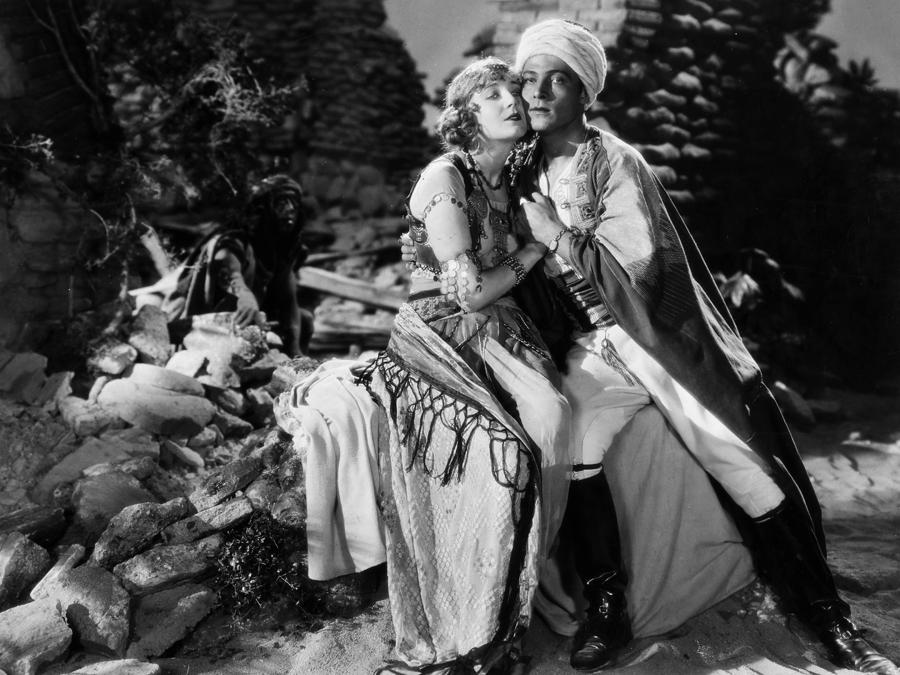
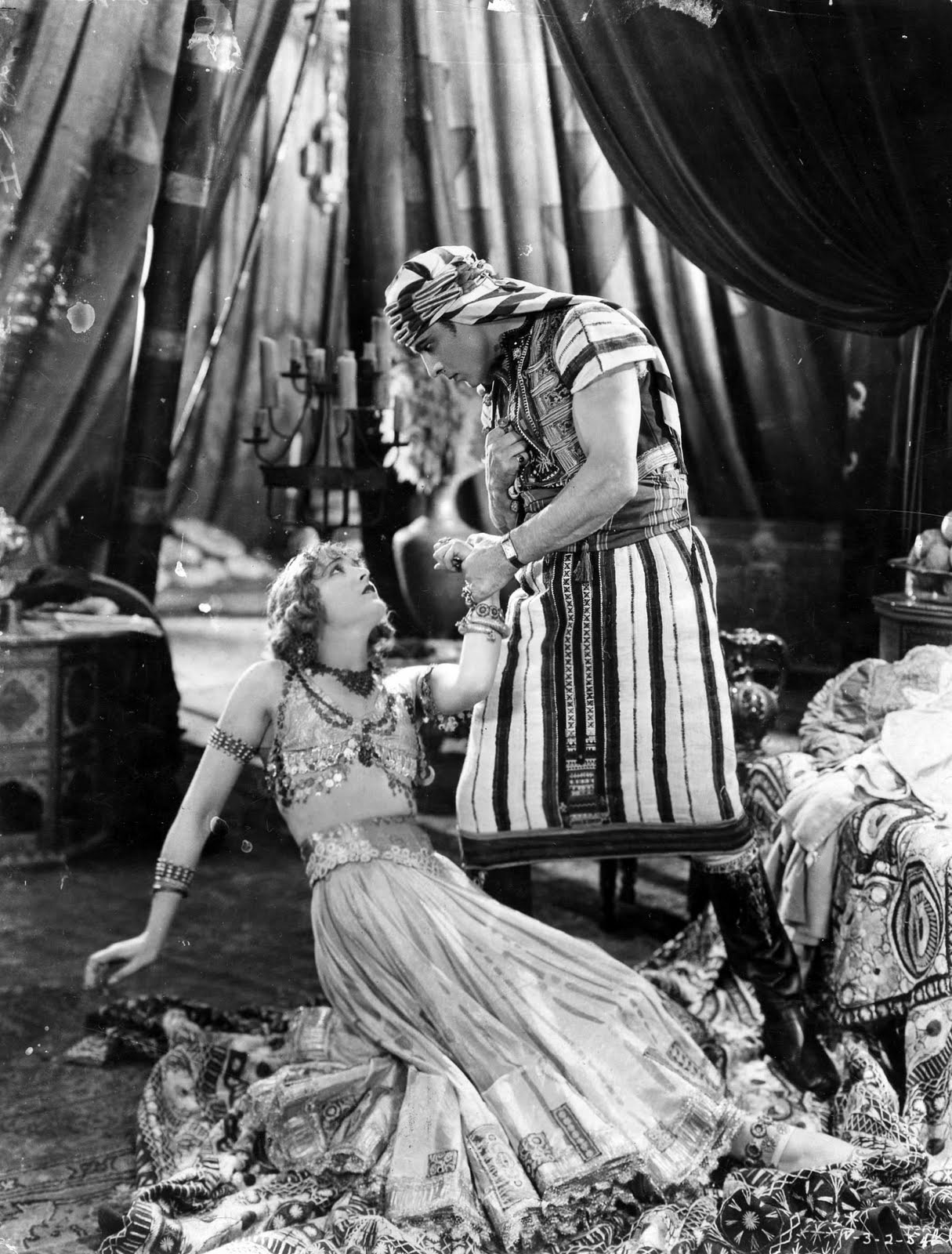
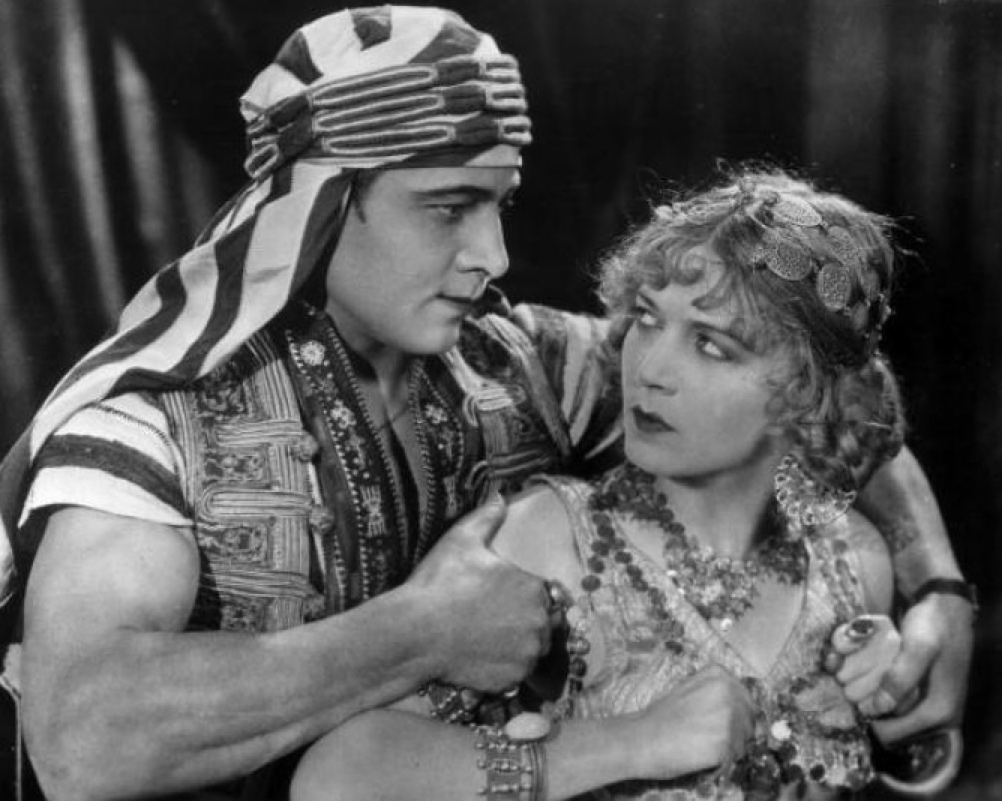
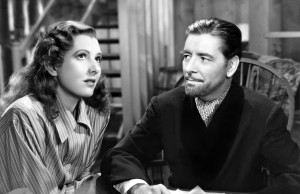
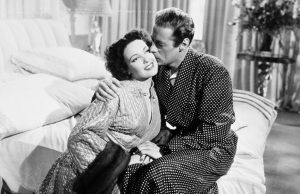
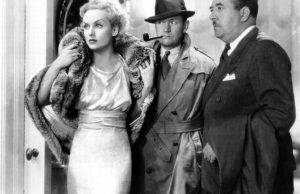






Leave a Reply